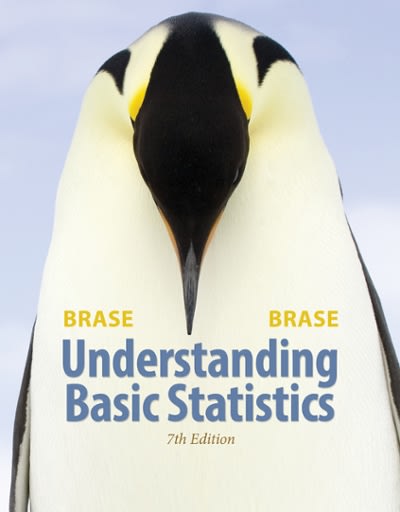Expand Your Knowledge: Logarithmic Transformations, Power Law Model When we take measurements of the same general type,
Question:
Expand Your Knowledge: Logarithmic Transformations, Power Law Model When we take measurements of the same general type, a power law of the form y 5 axb often gives an excellent fi t to the data. A lot of research has been conducted as to why power laws work so well in business, economics, biology, ecology, medicine, engineering, social science, and so on. Let us just say that if you do not have a good straight-line fi t to data pairs (x, y), and the scatter plot does not rise dramatically (as in exponential growth), then a power law is often a good choice. College algebra can be used to show that power law models become linear when we apply logarithmic transformations to both variables. To see how this is done, please read on. Note: For power law models, we assume all x 0 and all y 0.
Suppose we have data pairs (x, y) and we want to fi nd constants a and b such that y 5 axb is a good fi t to the data. First, make the logarithmic transformations x 5 log x and y 5 log y. Next, use the x , y data pairs and a calculator with linear regression keys to obtain the least-squares equation y 5 a 1 bx . Note that the equation y 5 a 1 bx is the same as log y 5 a 1 b log x . If we raise both sides of this equation to the power 10 and use some college algebra, we get y 5 10a x
b. In other words, for the power law model, we have a < 10a and b < b.
In the electronic design of a cell phone circuit, the buildup of electric current
(Amps) is an important function of time (microseconds). Let x 5 time in microseconds and let y 5 Amps built up in the circuit at time x.
x 2 4 6 8 10 y 1.81 2.90 3.20 3.68 4.11
(a) Make the logarithmic transformations x 5 log x and y 5 log y. Then make a scatter plot of the x , y values. Does a linear equation seem to be a good fi t to this plot?
(b) Use the x , y data points and a calculator with regression keys to fi nd the leastsquares equation y 5 a 1 bx . What is the sample correlation coeffi cient?
(c) Use the results of part
(b) to fi nd estimates for a and b in the power law y 5 axb. Write the power law giving the relationship between time and Amp buildup.
Note: The TI-84Plus/TI-83Plus/TI-nspire calculators fully support the power law model. Place the original x data in list L1 and the corresponding y data in list L2. Then press STAT, followed by CALC, and scroll down to option A: PwrReg. The output gives values for
a, b, and the sample correlation coeffi cient r.
Step by Step Answer:

Understanding Basic Statistics
ISBN: 9781305548893
7th Edition
Authors: Charles Henry Brase, Corrinne Pellillo Brase





